Last Updated on January 16, 2021
The moped dragged us across the bumpy terrain of Hampi. Today was our last day in this surreal landscape. There was only one agenda in mind – explore the ruins of Hampi on a moped. Follow the nose (of the moped) to the not much-trodden paths and get lost somewhere among the boulders, broken palace basements, fallen temples, and watchtowers.
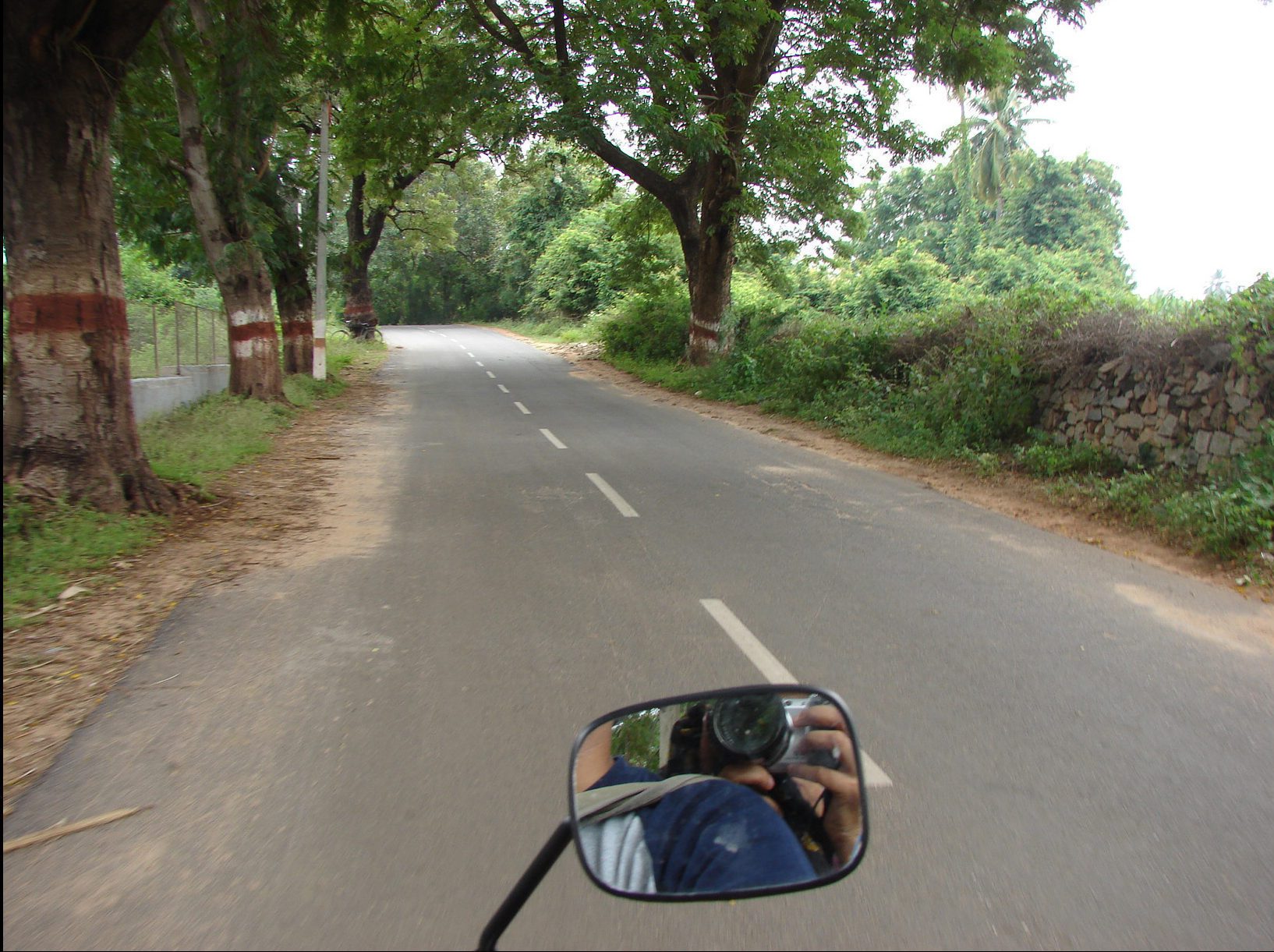
The previous day after an enjoyable walk discovering Hampi on foot, we had rented a moped from Hampi bazaar and had paid Rs. 300, inclusive of the fuel. There are numerous shops in Hampi bazaar that rents out cycles, scooters, and mopeds. They even let you keep the vehicle overnight at your hotel. You just have to give them a xerox copy of any valid photo identity proof.
Also read: Discovering Hampi on foot.
Discovering Hampi on a moped
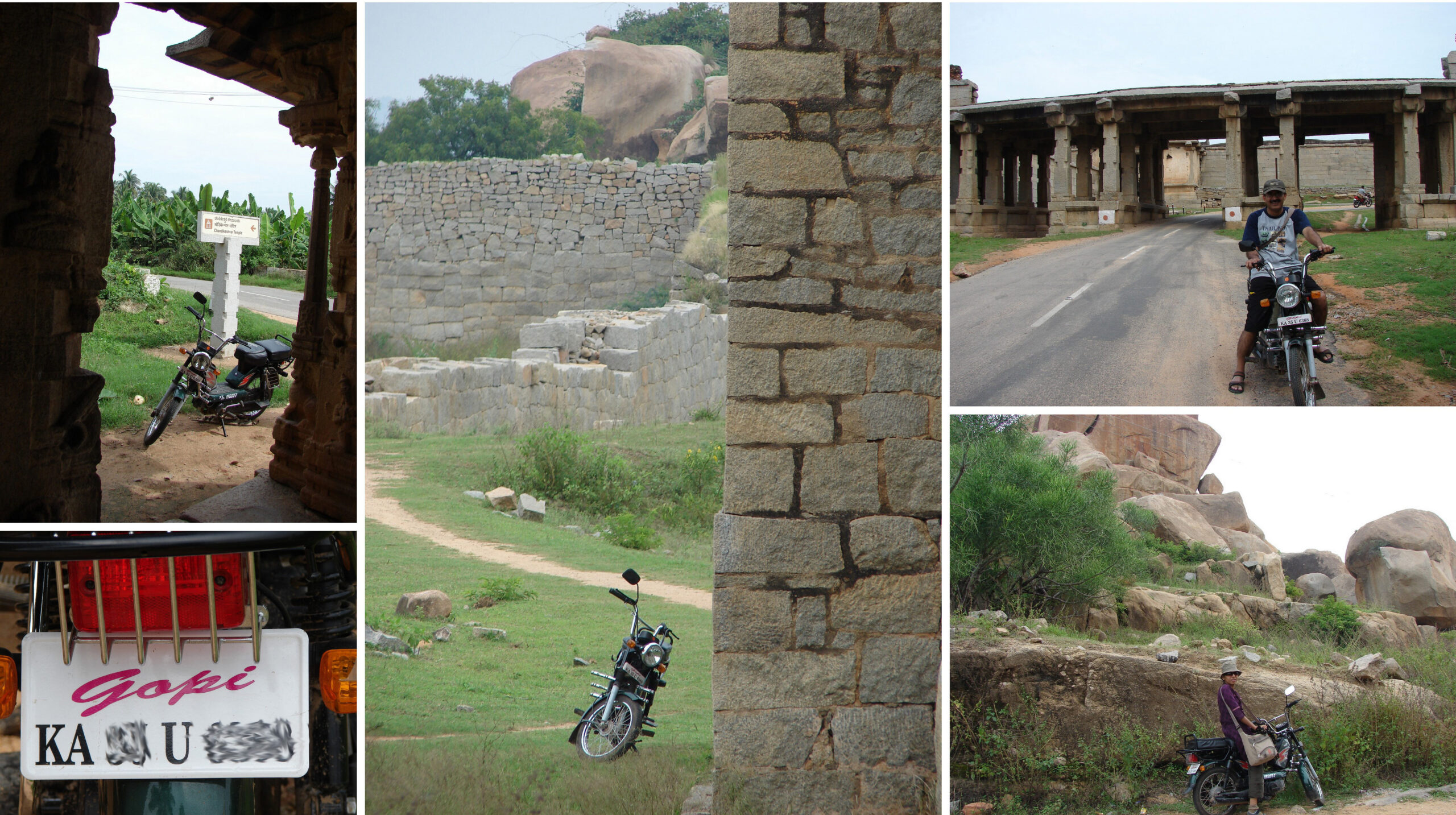
From Hampi bazaar, we took the road to Kamalapura village. Right before the underground Shiva temple we saw a mud track and decided to follow it. After a few turns, we reached a watchtower called the Mohammadan watchtower. The watchtower had steps leading up to a balcony which overlooked the mud track.
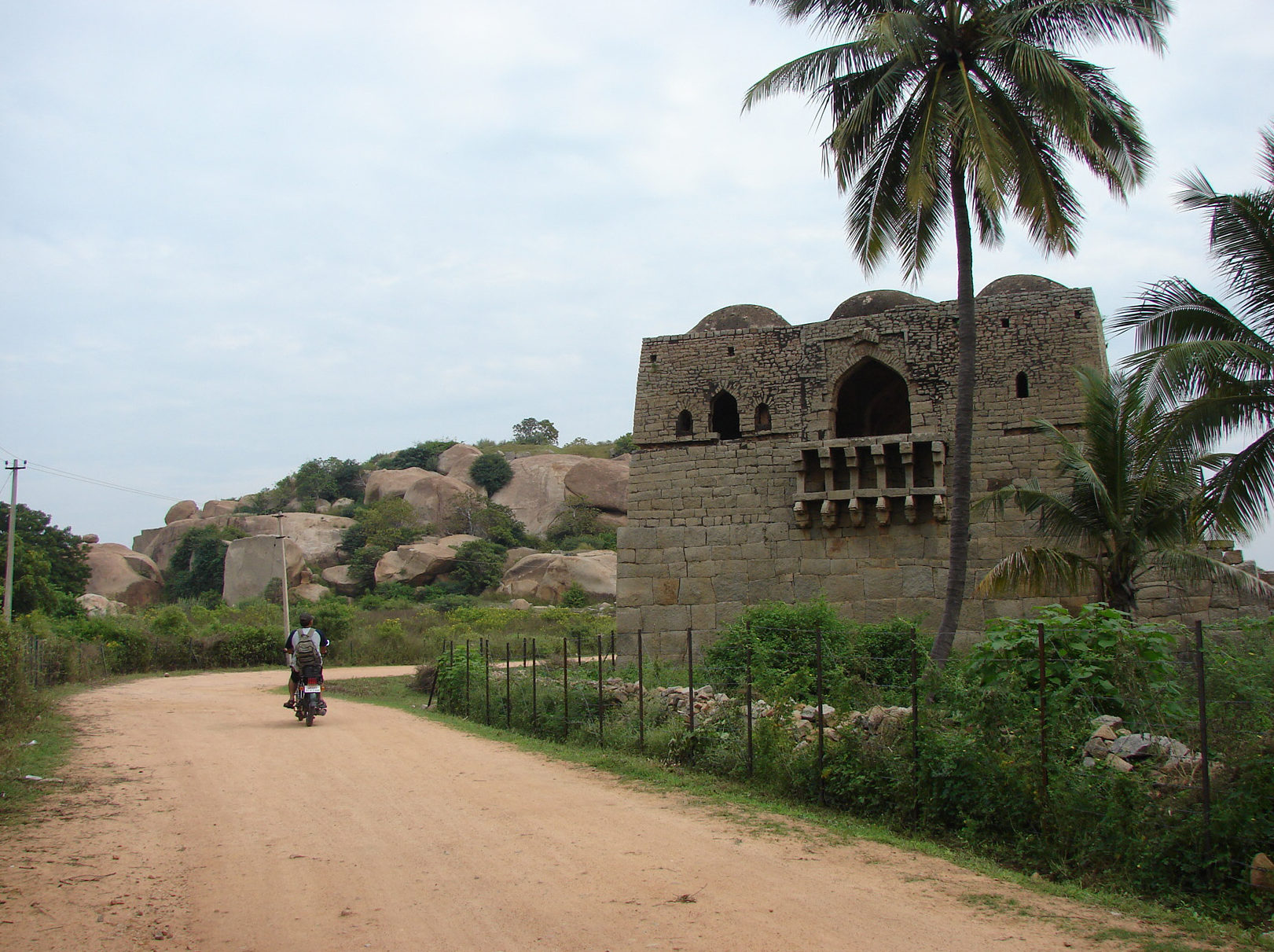
A few meters from the watchtower is the Danaik enclosure.
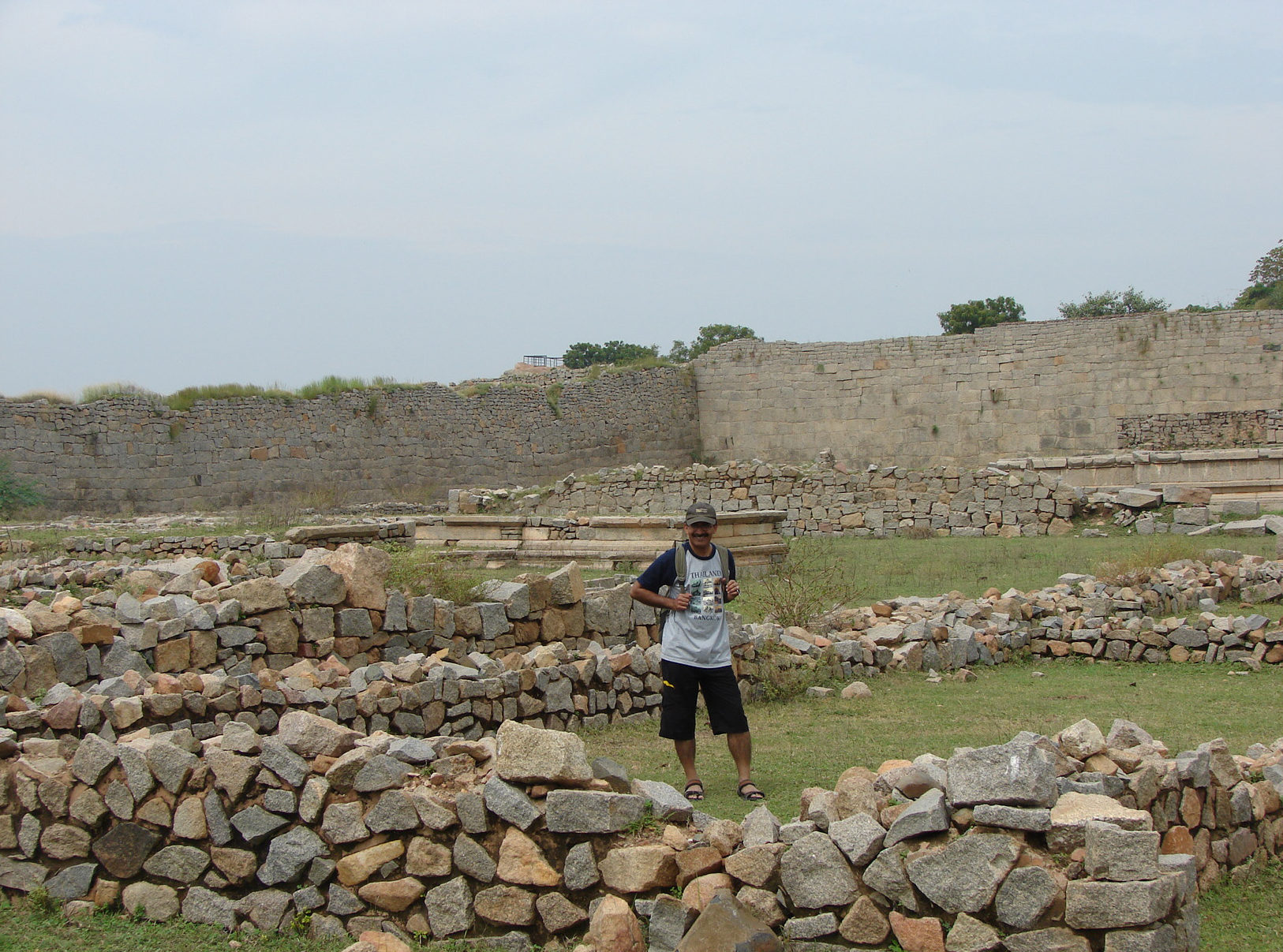
This was used as the military training area. Only the systematically partitioned basement of the enclosure remains.
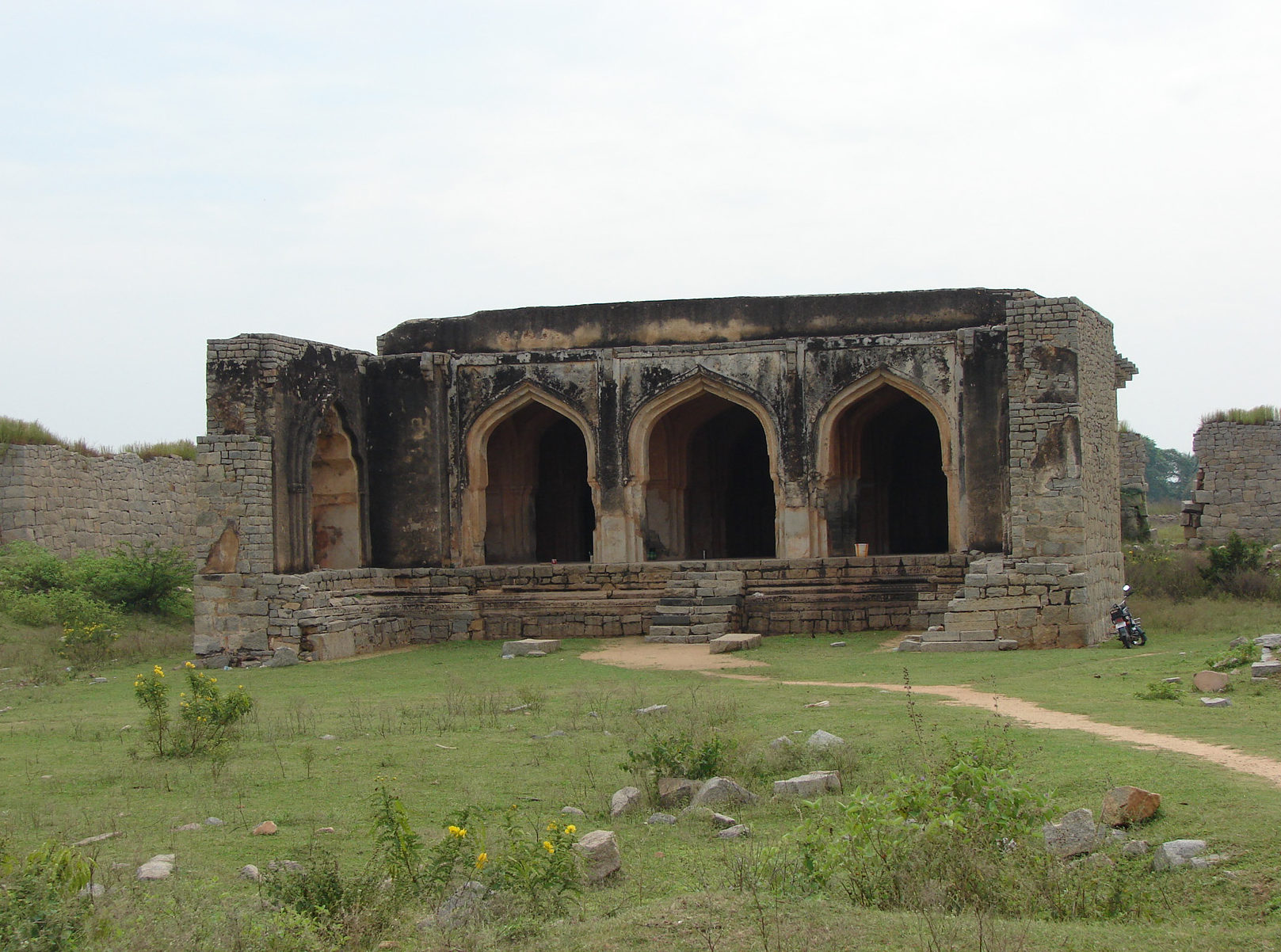
Right next to the Danaik enclosure is a mosque and another watchtower called the band tower.
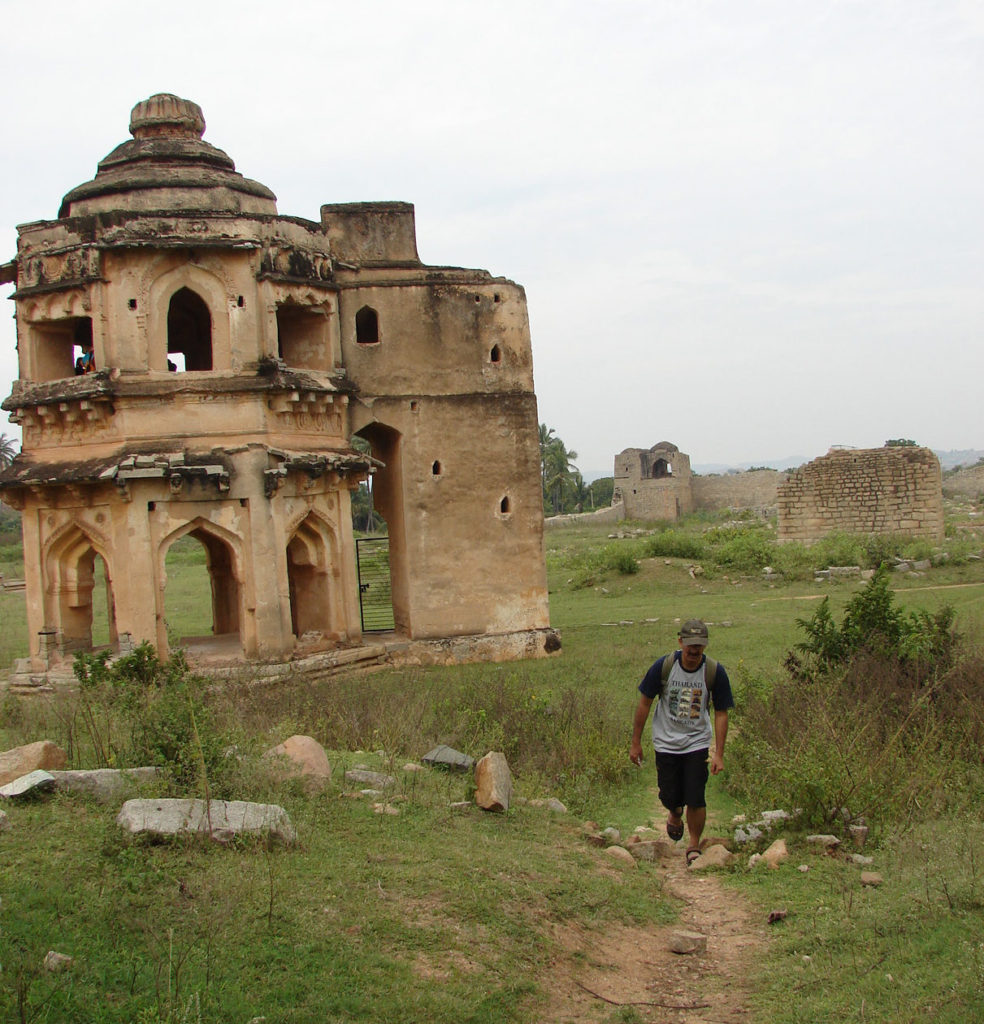
On the other side of the Mohammadan watchtower is the noblemen’s quarters. This was where the aristocrats lived. Just like the Danaik enclosure, only the basement remains.
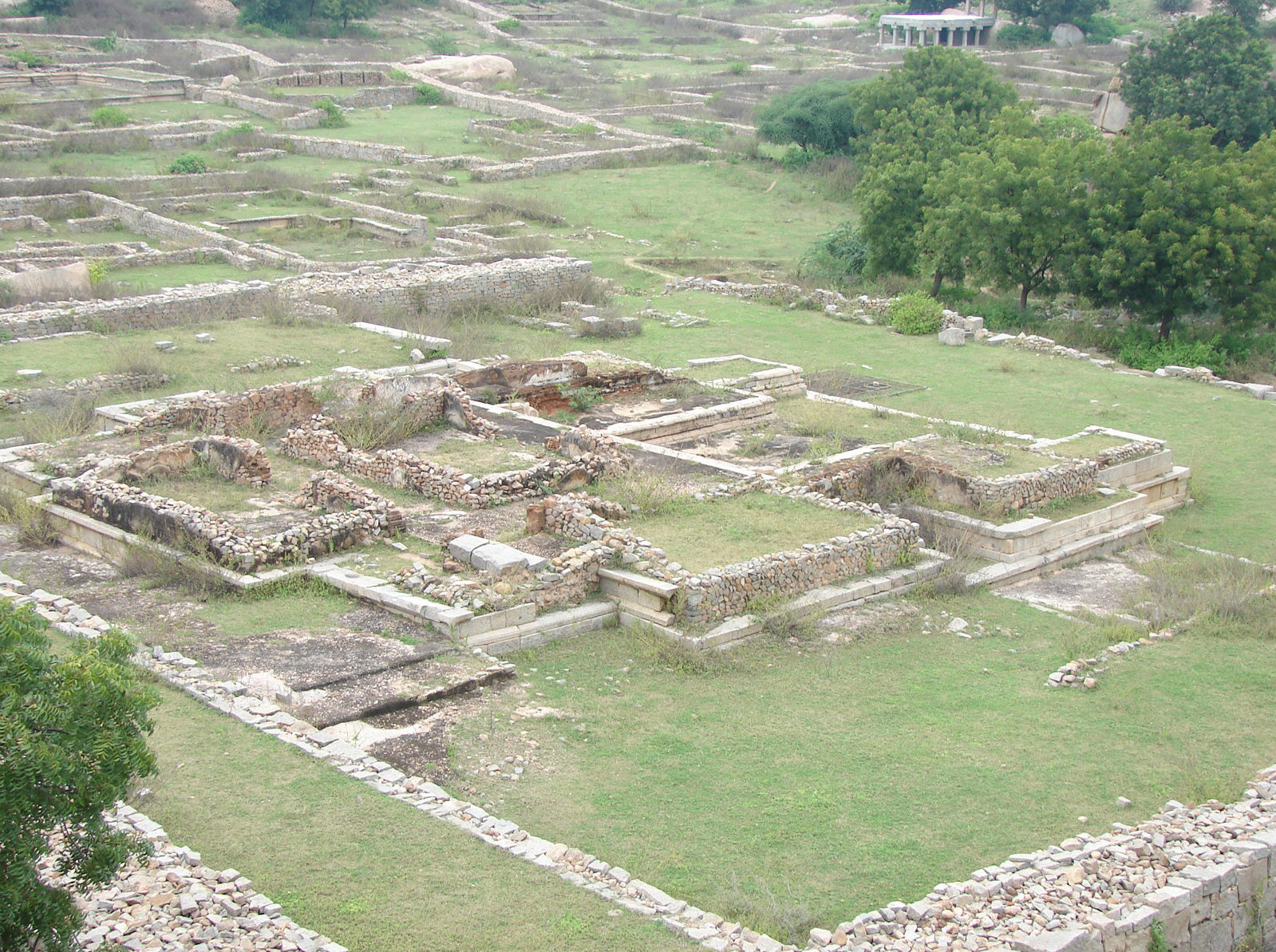
Right next to the quarters is a modern watchtower with steps, railings et al. We climbed the watchtower to get a better view of the whole area. The bird’s eye view was worth the climb.
Malyavanta Raghunatha temple
Our next stop on our Hampi on a moped exploration was Malyavanta Raghunatha temple. This temple is situated on top of Malyavanta hill which is on the way to Kampili village. The road was steep, winding and long.
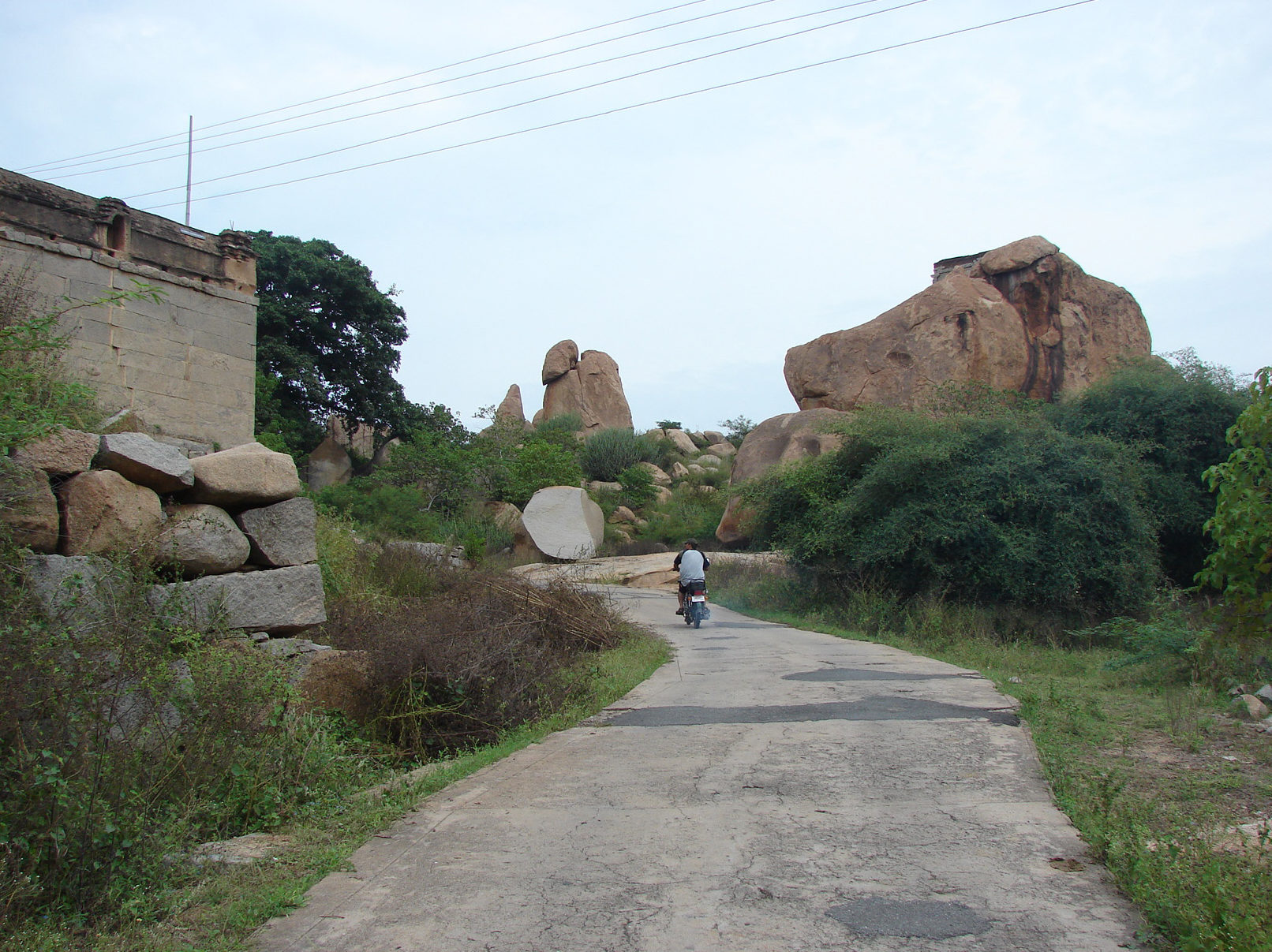
I was obliged to dismount at a point and followed on foot.
The legend is that, after killing Bali, Rama and Lakshmana rested at this place before going in search of Sita.
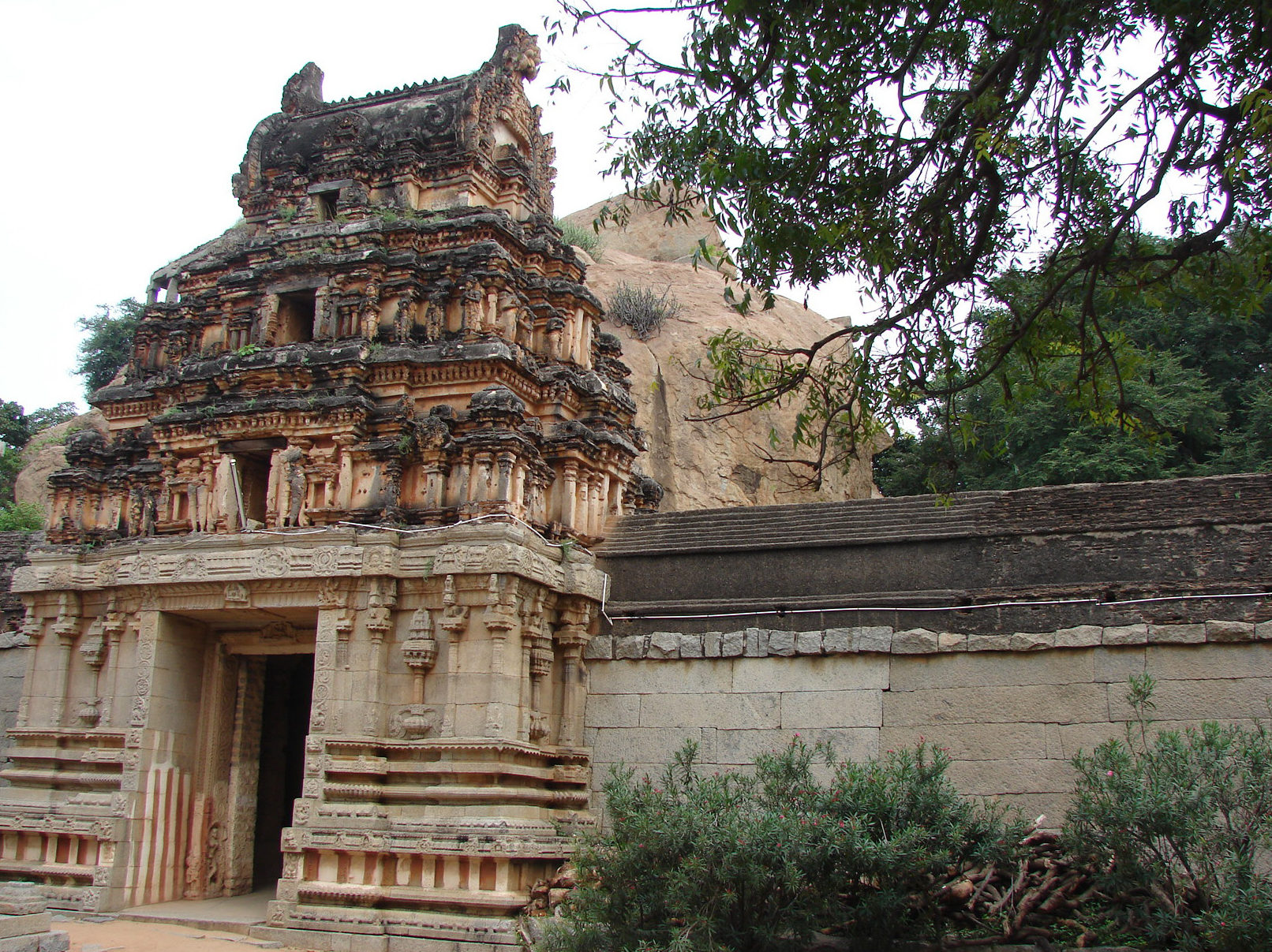
The 3-storeyed eastern gopura of the temple leads into a large courtyard. There were a few neatly pruned trees and a few dogs enjoying their pre-noon siesta.

Other than a single devotee reading shlokas from the Ramayana, we were the only people inside the complex. The temple has large pillared ornate mandapas on both sides.
From the western side of the temple, you can step onto the Malyavanta hill and climb a bit further up. From the top of the hill, you can get a view of the tough and rustic Hampi terrain.
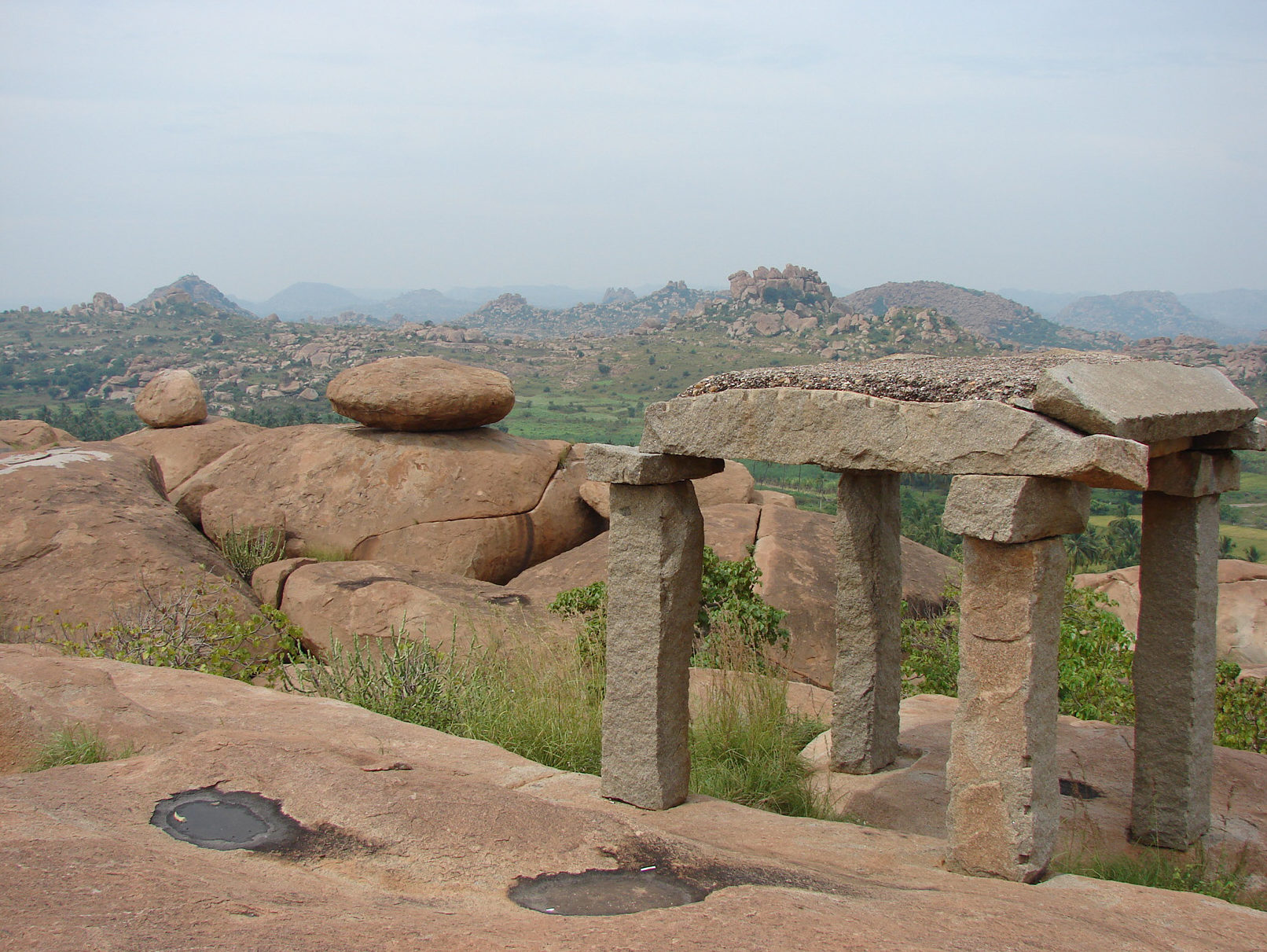
There is a small shrine on top of the hill with a lot of shivalingas sculpted out from the rocks.
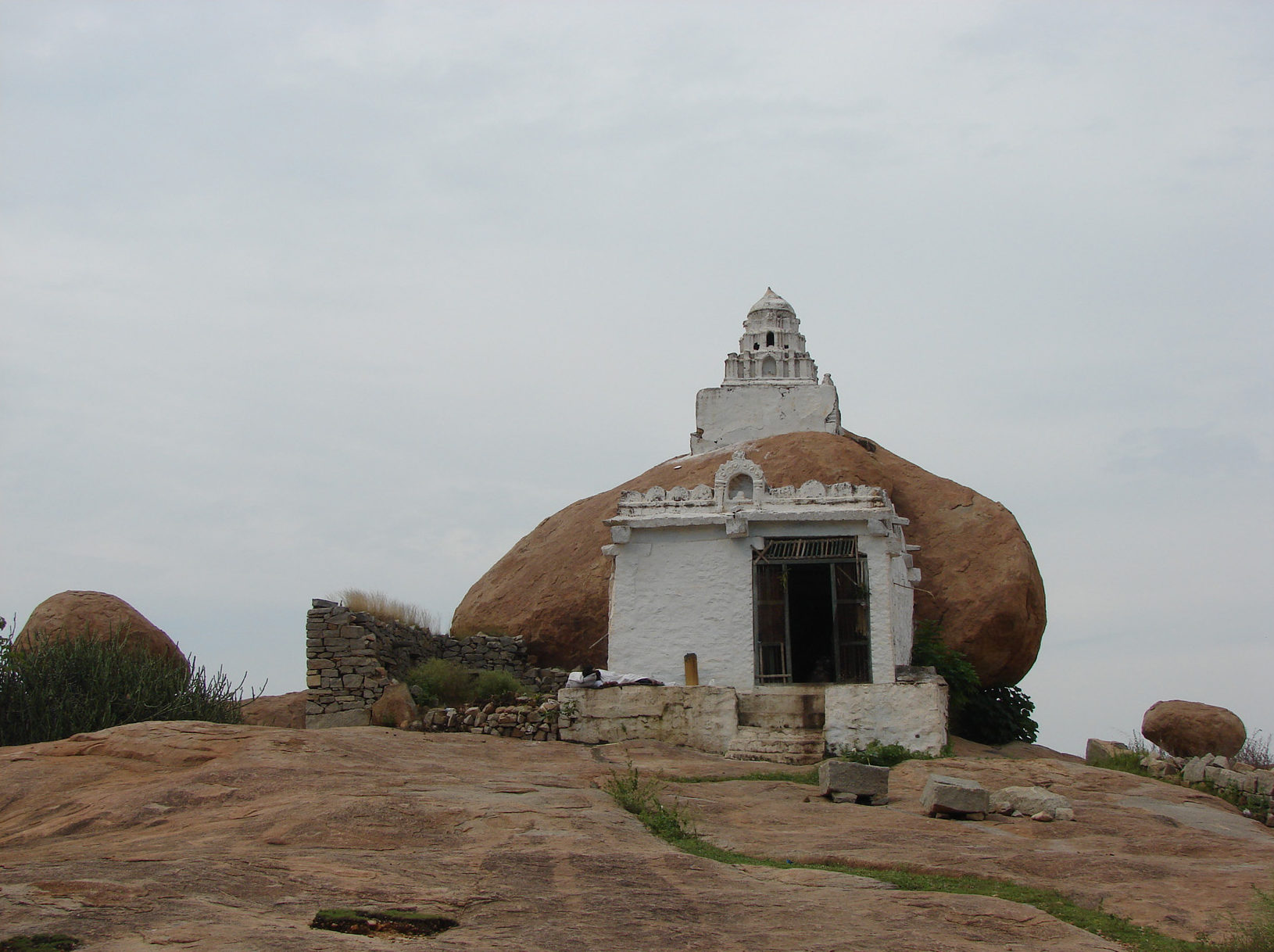
Pattabhirama temple
Our next stop, Pattabhirama temple, though as large as Vittala temple, is less frequented by tourists. It is probably due to its location being a little away from the rest of Hampi and just beyond the Kamalapura village en route to Daroji Bear Sanctuary.
The security guard at the gate seemed a bit surprised to see us. He said only the most committed of visitors make it to Pattabhirama temple. Modestly patting ourselves, we entered the temple complex through a side entrance.
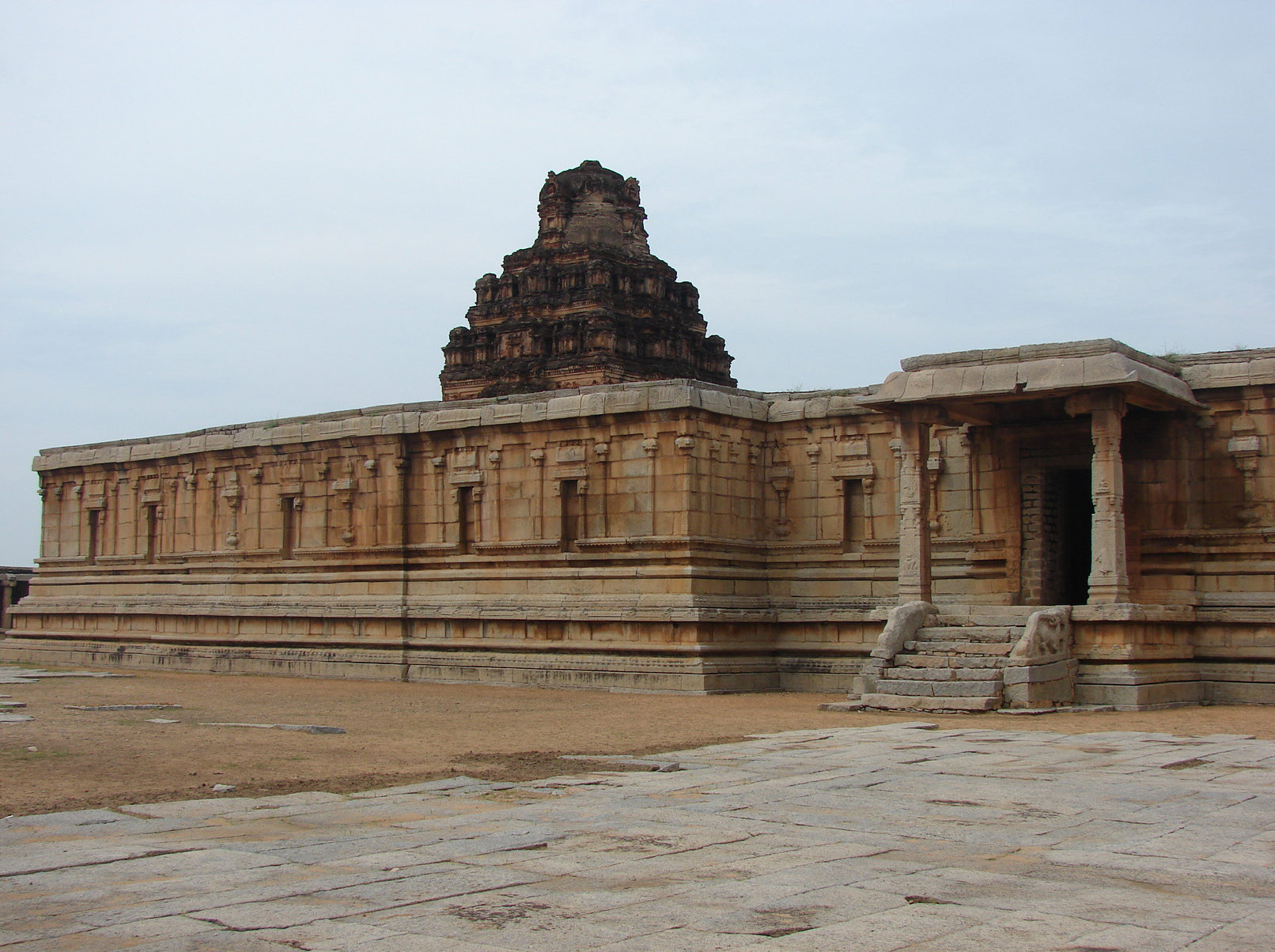
The temple must have been a grand structure during its prime. The huge courtyard had various mandapas on all sides with the main sanctum at the center.
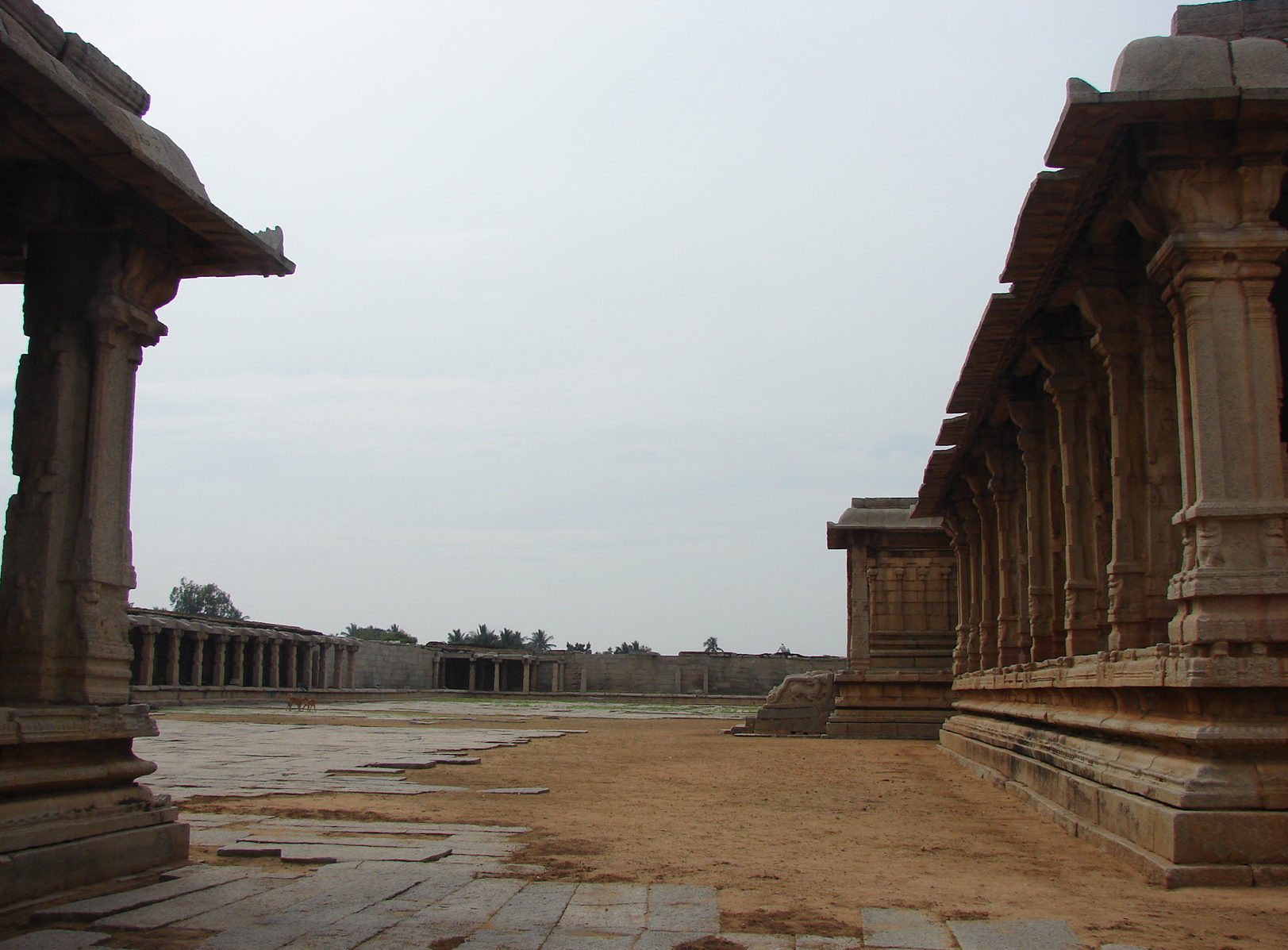
Other than the abundant simian population, both alive and sculpted, no other soul was in the premises.
Domed gate
Further down the road, we came across a rectangular shaped structure with a dome called the Domed gate.
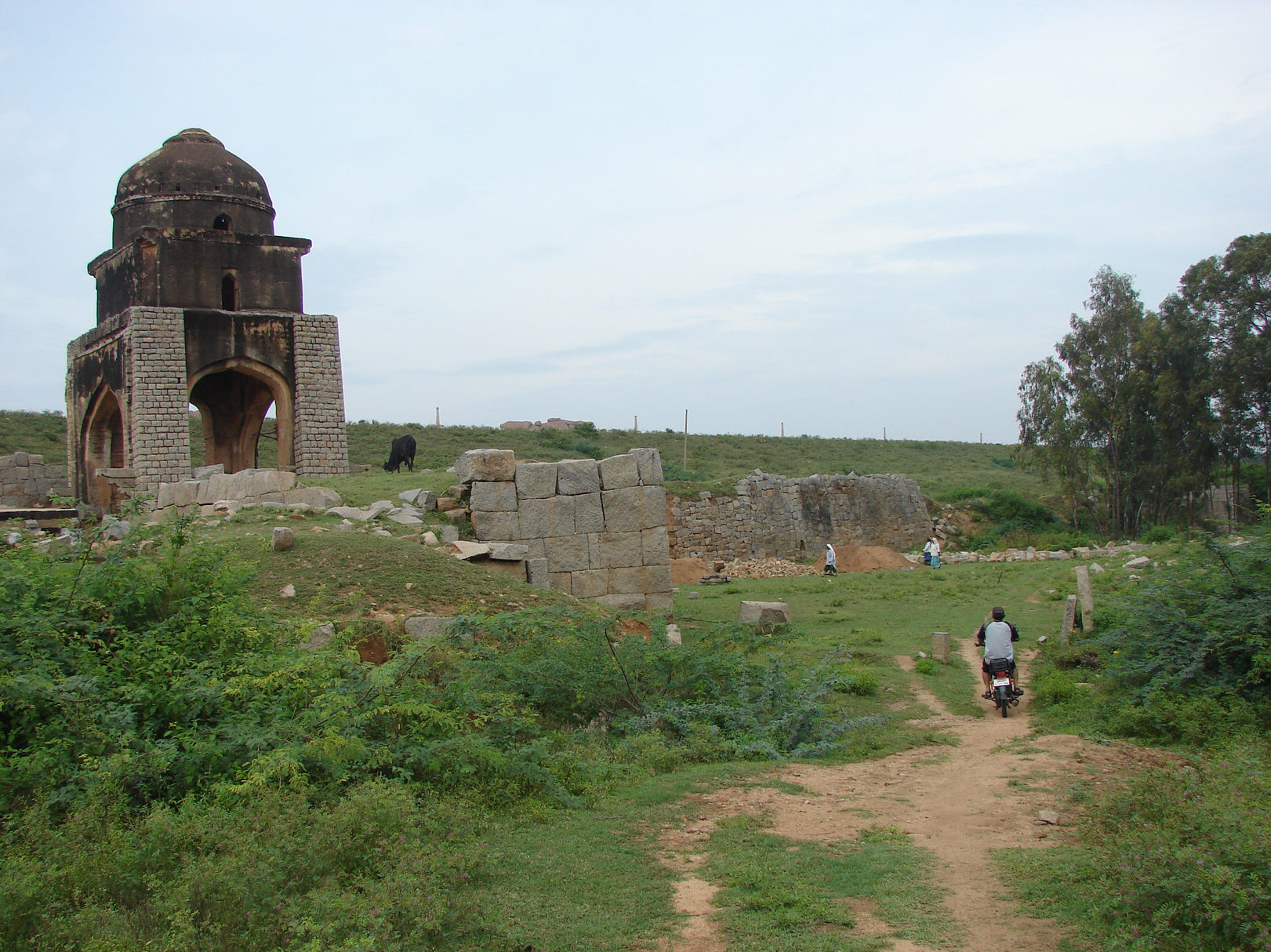
Within the Domed gate, there is an image of Hanuman carved on the wall.
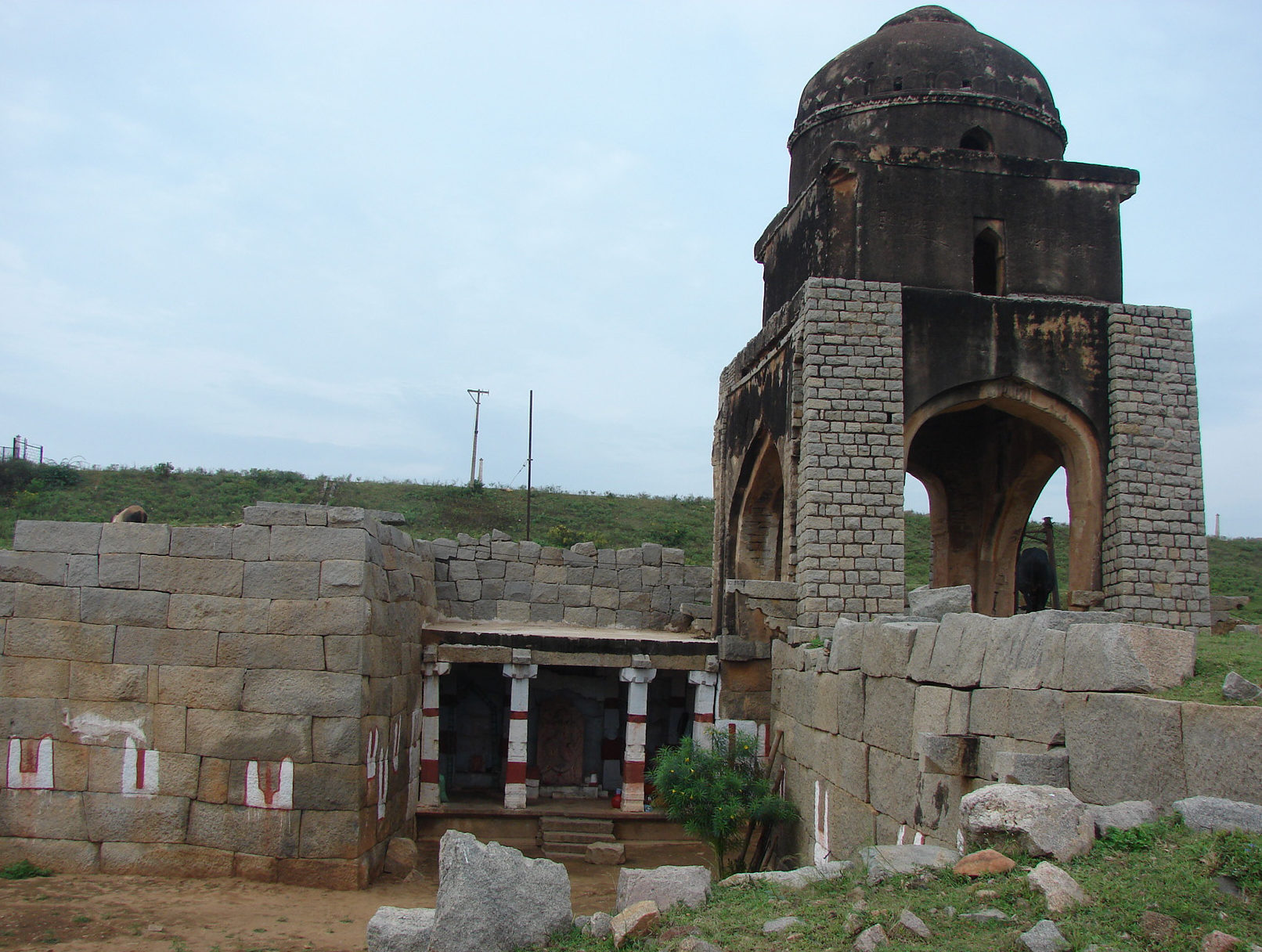
This gate had no similarities with the Bhima’s gate we had seen earlier. However, we did find some similarities with the Talarigatta gate we saw later.
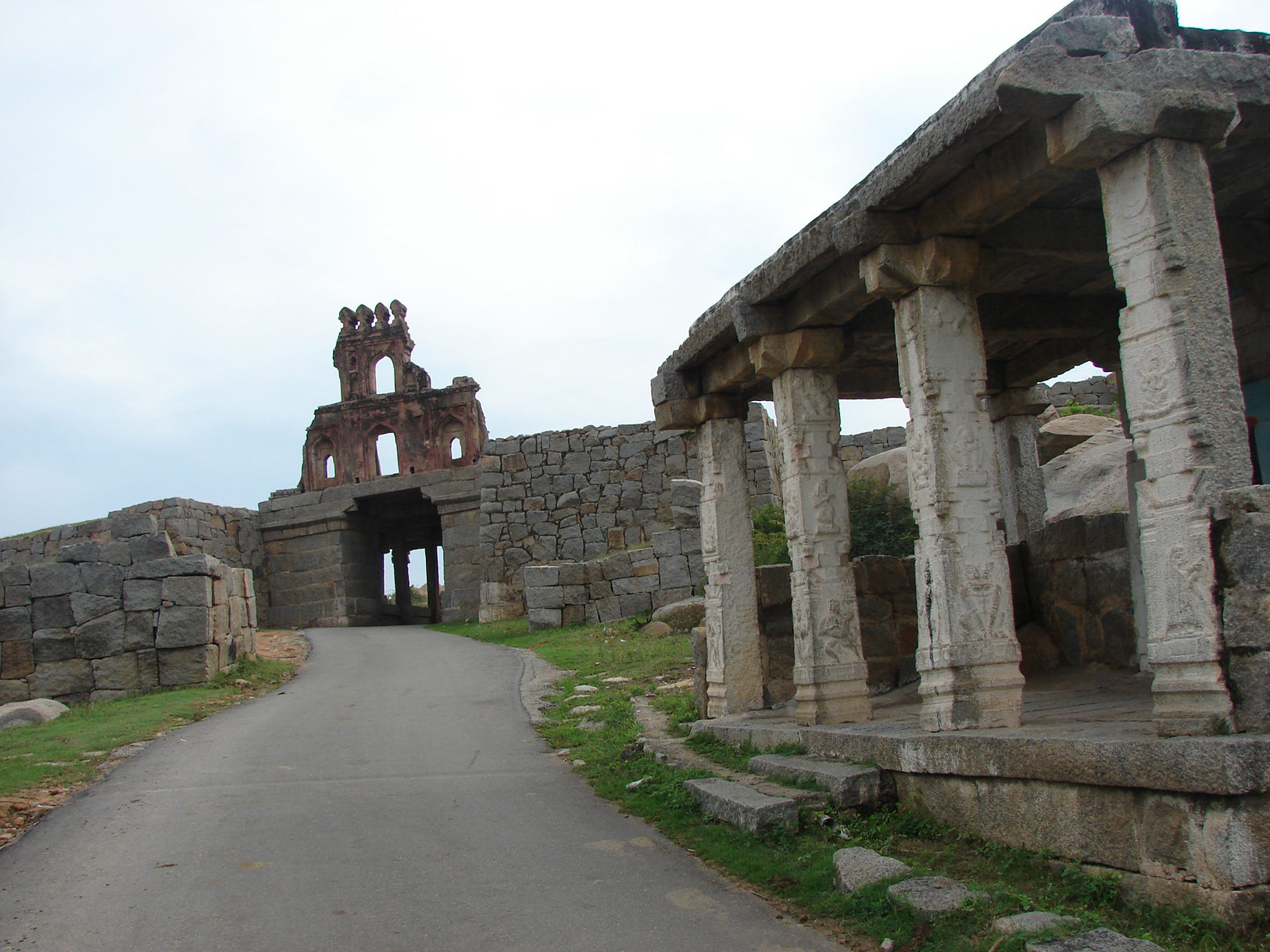
Bathhouses in Hampi
We continued our journey of discovering Hampi on a moped.
In ancient Hampi, very few people would have had houses with private bath areas. People must have enjoyed going to public bathhouses. We came across at least three public bathhouses, not to mention the innumerable pushkarinis (water tanks) we saw.
The most magnificent of them all is the Queen’s bath pavilion, the bathing area for the queen.
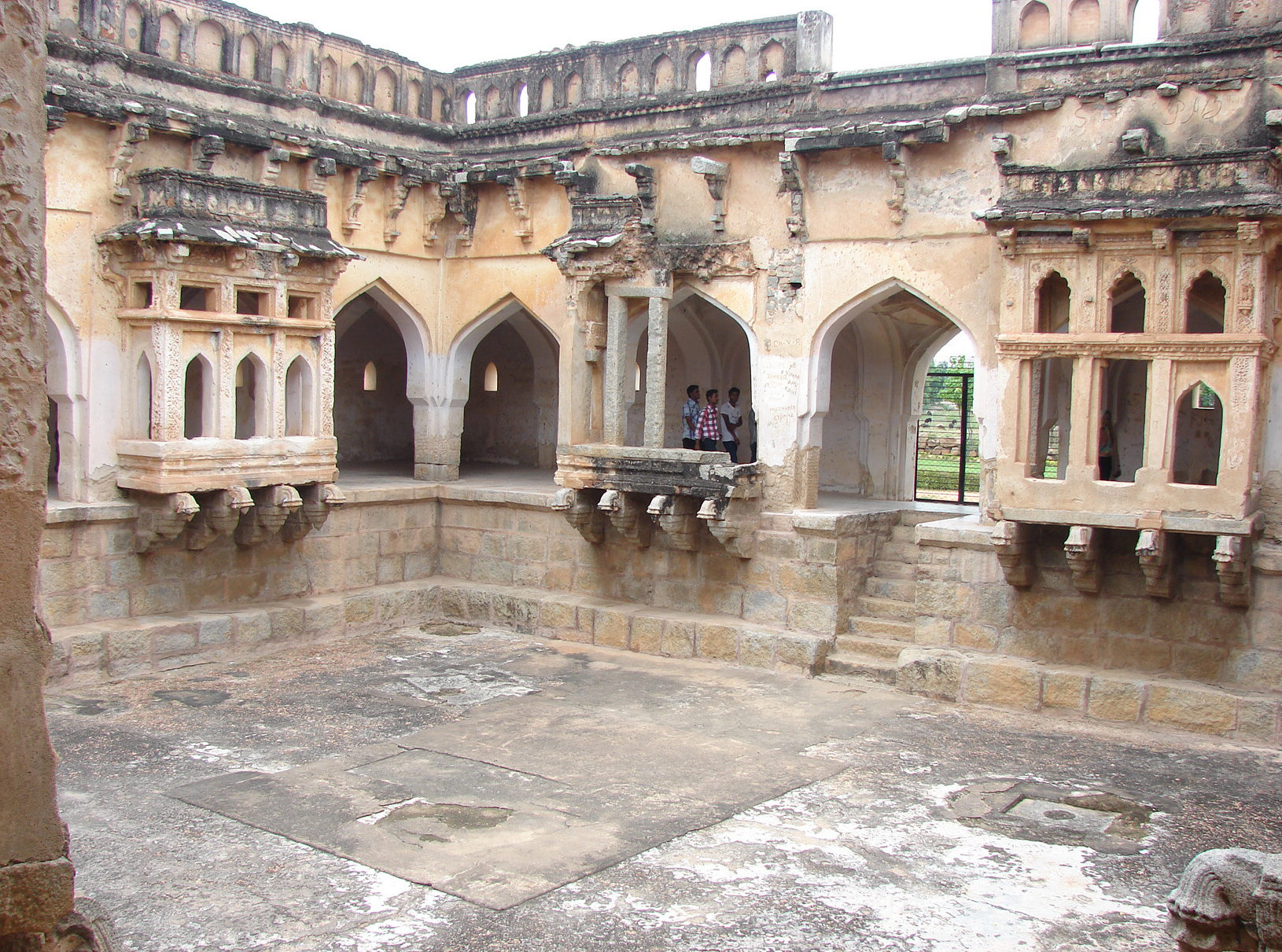
The pavilion had a veranda that ran on all sides. In the middle is an open pond that can be accessed by steps. Projecting into the pond from the verandah are many balconies decorated with tiny windows. There were various aqueducts terminating inside the pond. The pavilion did not have a roof.
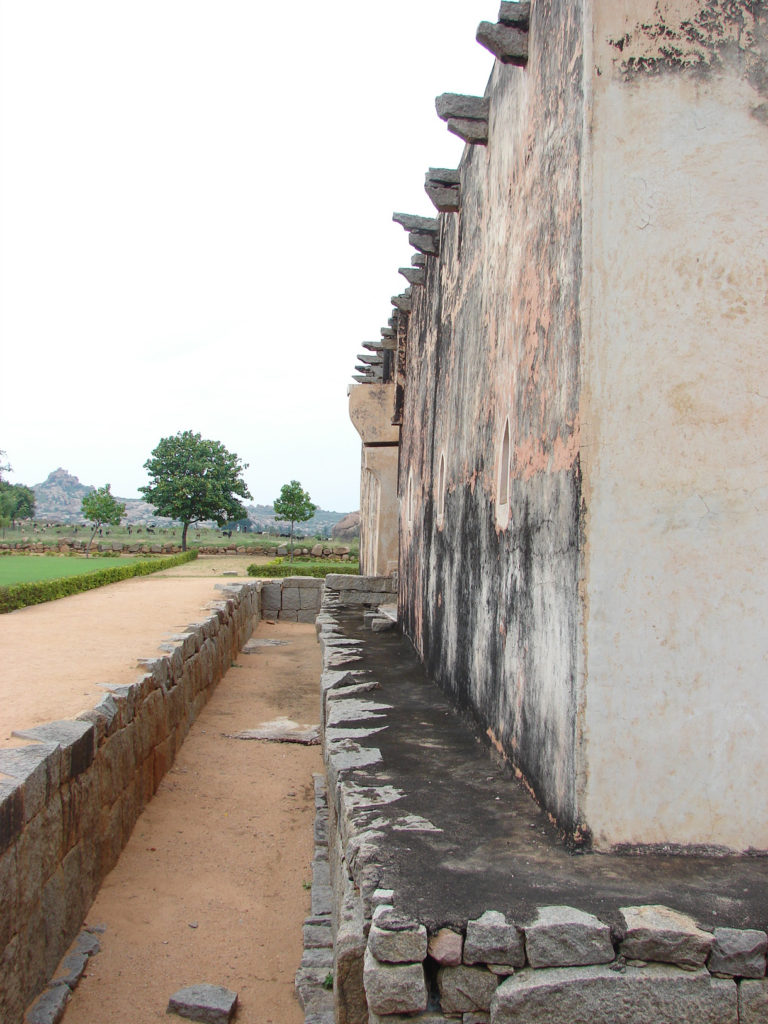
Around the building was a water channel that was probably designed to prevent intruders from walking into the pavilion when the women took bath! The Queen’s bath can be found right next to the road to Hampi bazaar.
Another public bath, the Octagonal bath, as the name suggests, is an octogonal bathing area.
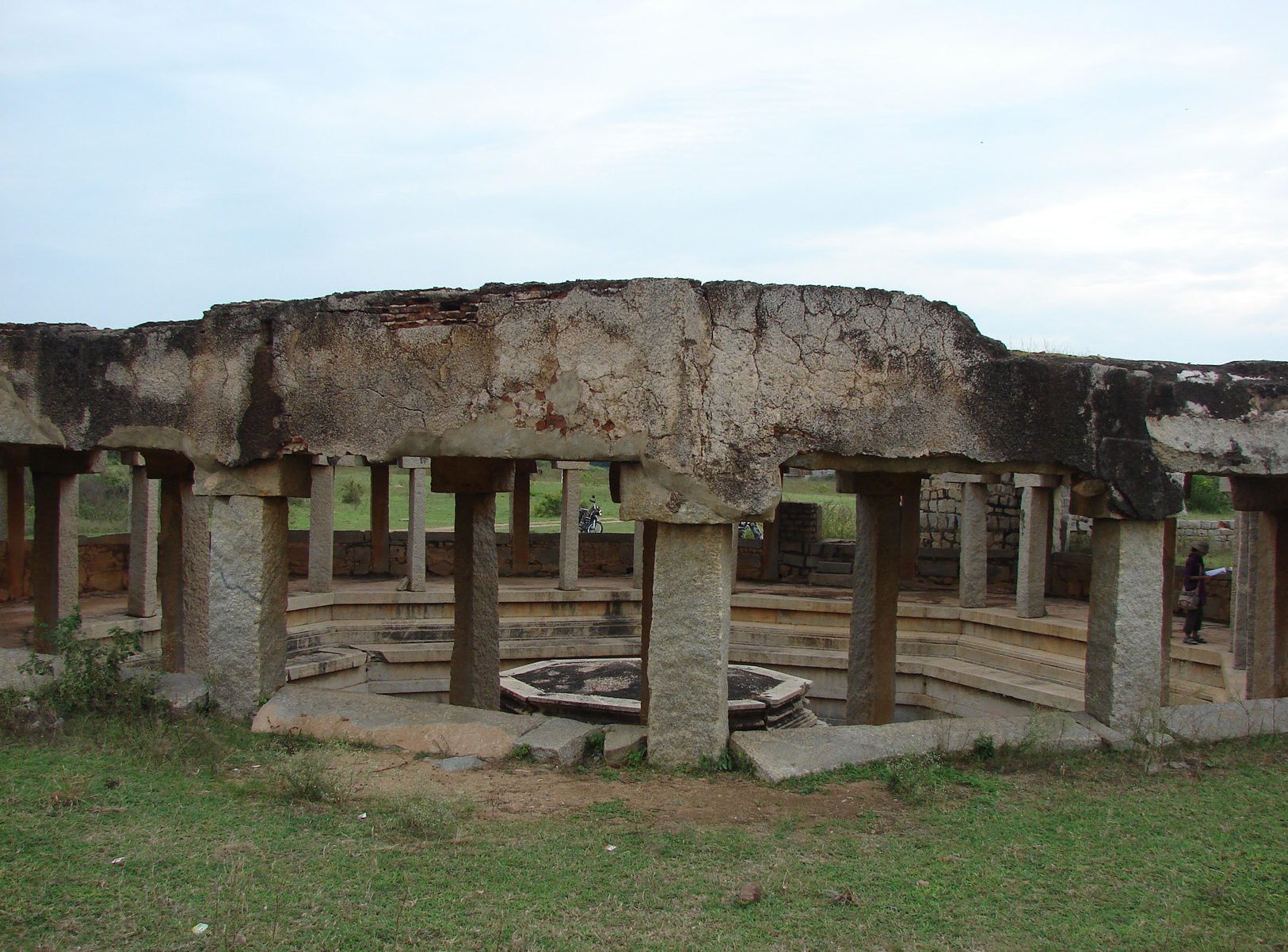
The bath has an octagonally shaped platform with aqueducts at the middle and has a pillared veranda around it.
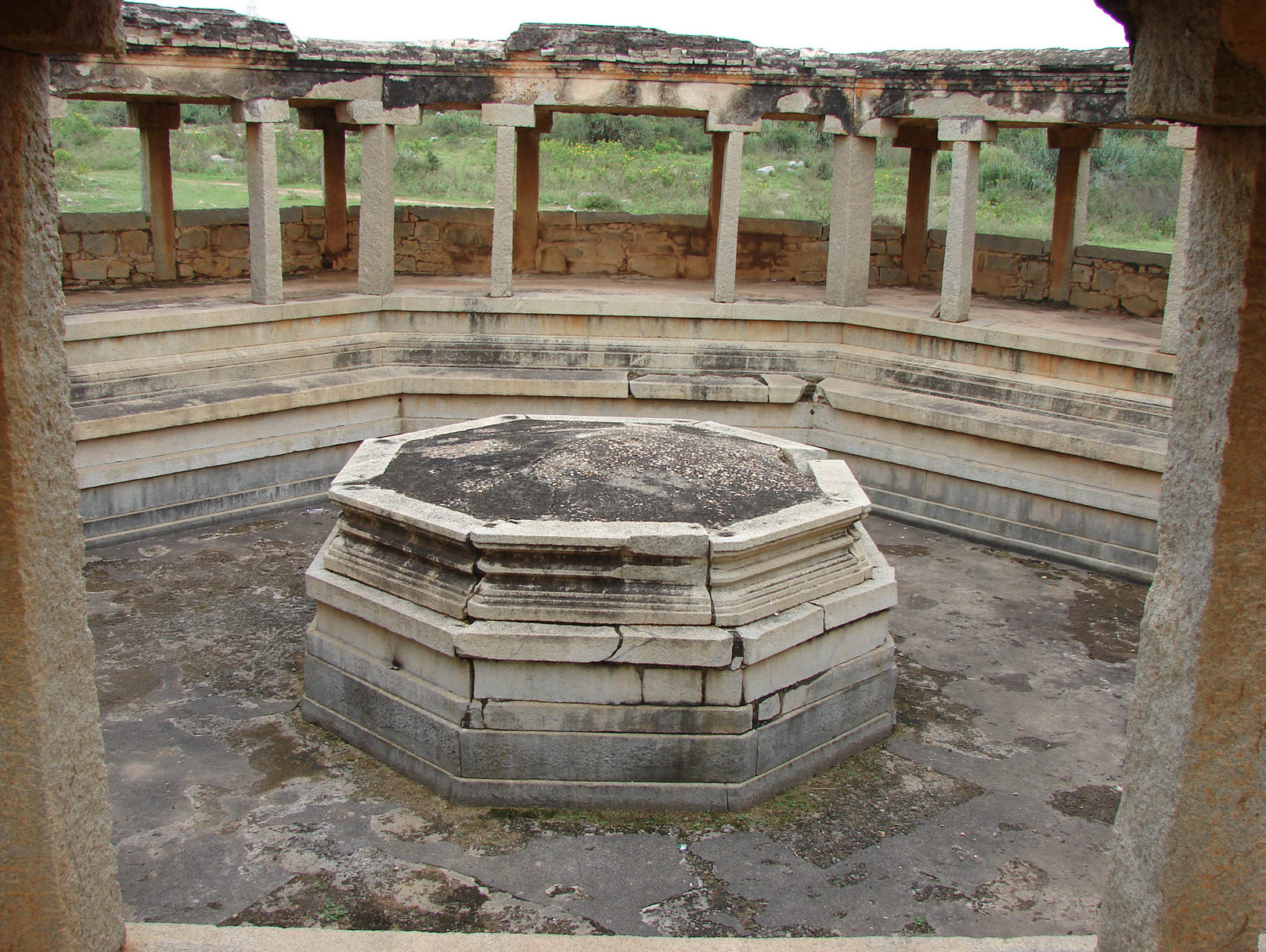
The area between the veranda and the platform must have been the bathing area. This is found on a mud path about a kilometer from the Queen’s bath.
The third was an octagonal water pavilion, found on the road to Hampi Bazaar. This could have been a magnificent water fountain in its prime.
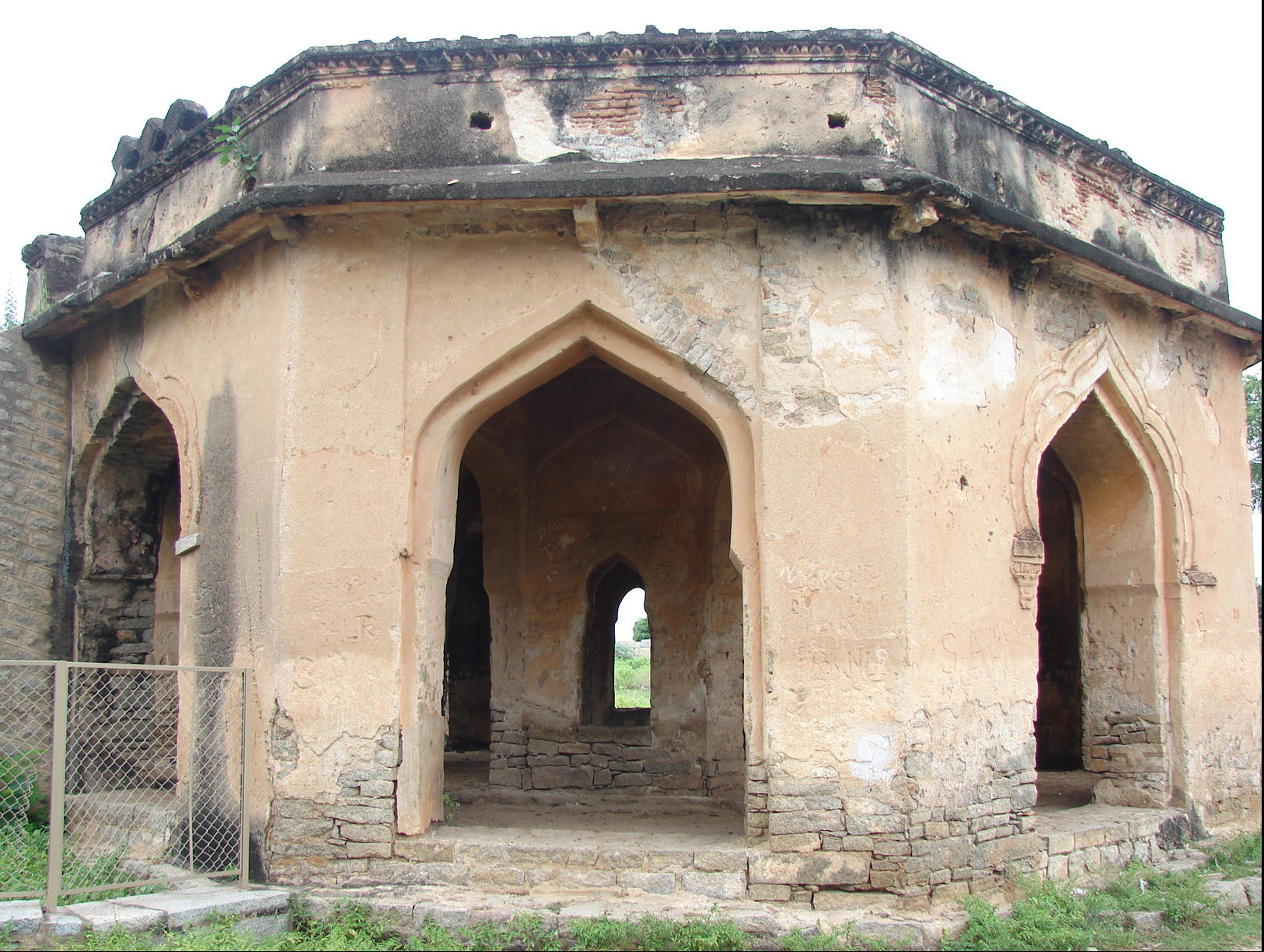
Now practically in an abandoned stage with bushes and wild grass growing around, it looks more like a makeshift cooking place.
Sunset from Hemakuta hill
We had spent three days in Hampi and had not seen the sunrise or set. The sky was overcast on all days during dawn and dusk, not allowing us to capture the beautiful event. We climbed up the Hemakuta hill with whatever energy that remained to capture whatever remained of the sun through the overcast skies.
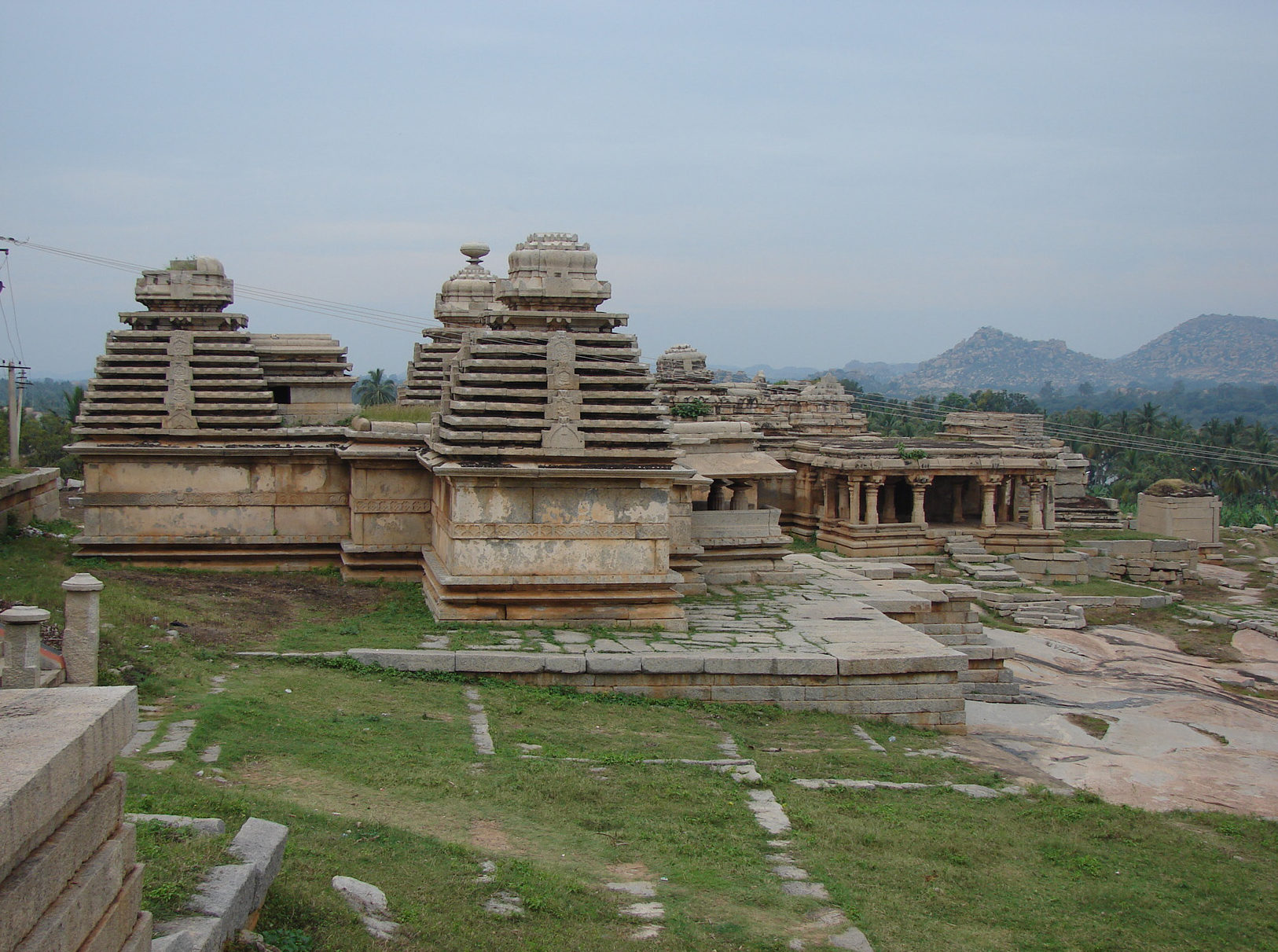
The Hemakuta hill is dotted with a lot of temples, the main being the Jain temples. The Jain temples look a bit different from the other temples. The main difference is in the stepped tower over the main shrine.
Hemakuta hill is an excellent vantage point. Other than the Virupaksha temple and the bazaar, a lot of other temples and ruins can be seen from the top. Sun or no sun, a lot of tourists had come to enjoy the light cool breeze of the evening.
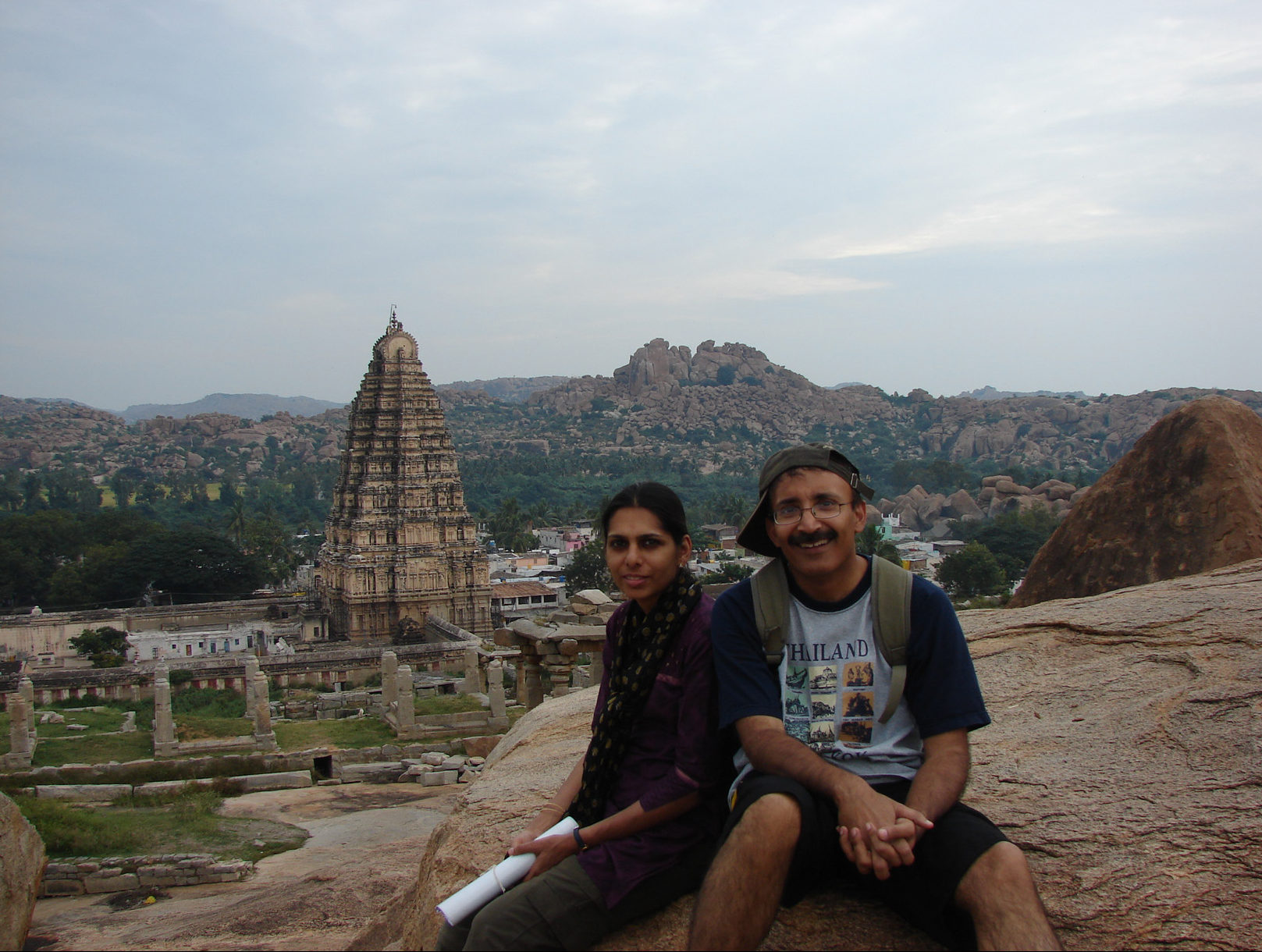
It was time for us to leave. Return journeys are the toughest. What we did figure out, though, was that this journey was so worth it.


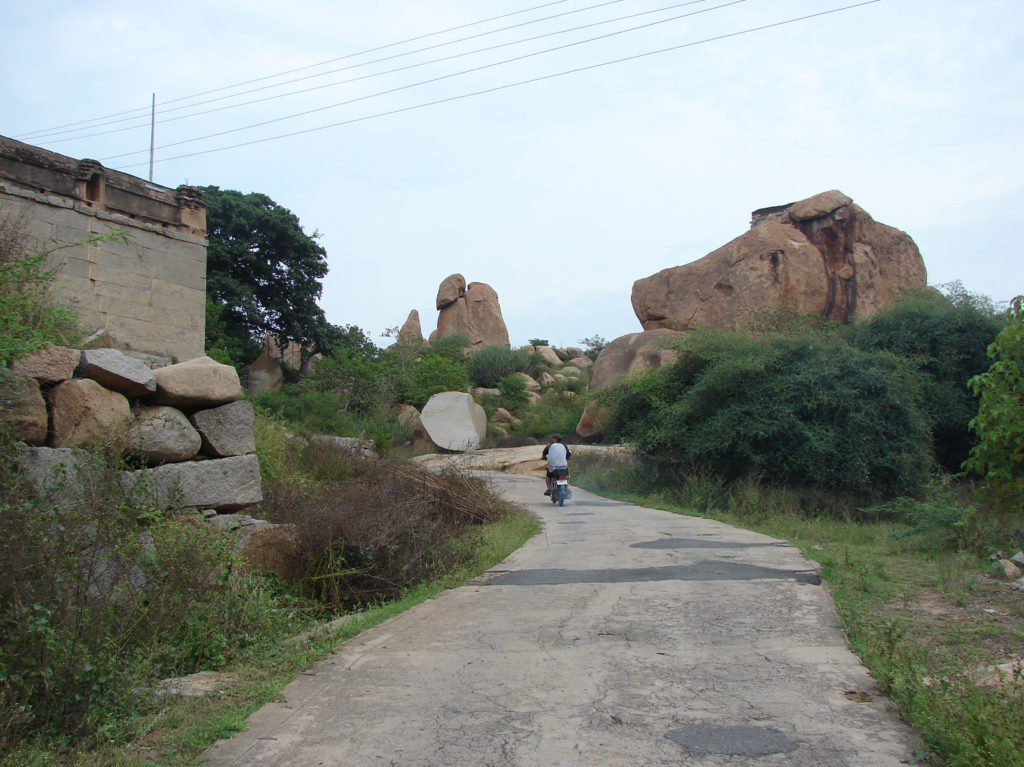


23 Comments
oh poyi kanda pole aayi 🙂
Thanks Priya.
I believe you all had a wonderful time, i think you were very close to Krishnadevaraya’s palace by the look of the photos uploaded.
Hampi on a moped is definitely exciting. Nice post.
http://www.rajniranjandas.blogspot.com
Thanks Niranjan. Driving on the moped was fun.
wonderful pics and interesting info
Thanks magiceye.
Mopeds are awesome in Hampi… although I preferred the cycle… a bit tiring but environment friendly…
Nice captures…
Thanks Jitaditya. I had not cycled for a very long time. Didn’t want to take a chance :).
my sincere warm wishes to you both which made a true adventurous visit explaining the inner & outer version of each and every corner of the history that went interestingly along with photographs makes us to feel what you have felt there.all the best.
Thank you. Glad you joined us on our journey.
Nice Pictures.
Me and my wife are visiting Malyavanta hill on our kinetic next month. Was the journey on a moped tiring? Did you guys switch off the engine downhill to enjoy the tranquil and calmness? Regards, Rajesh.
Thanks Rajesh.
The moped drive was not tiring, because we kept on stopping at places, though the drive up Malyavanta was a bit tiresome. And driving down, we did switch off the engine. It was fun. Enjoy your trip.
Thanks for your reply. How long is the journey downhill? Is it safe enough for my wife to ride the scooter on the way back? Your blog is extremely informative. Thanks once again
The distance is very little. A little more than a kilometer may be. It took a less than 5 minutes to climb up and even less to climb down.
Hi Malini,
My name is Kusum and your blogs are very informative and have covered all details. Me and my sister are planning to visit Malyavanta Hills next month and rent a scooter. Apart from Hampi, have you guys rode scooter on hills apart from Hampi. Since this is my first time on hills, do you usually switch off engine downhill and experience the ride? Thanks, Kusum
Thanks for the comment. We have not tried riding a bike in the hills though we do plan to ride to Leh, Ladakh or Spiti Valley. The hills in Hampi are not steep so the ride is not tiring.
Amazing description…. And great pictures… I am visiting Hampi this month…and your blog is really useful… Keep it up…
Also you can check my blog http://exploreexplore.blogspot.in/
Cheers! !
Thanks Rahul. Glad to know that my blog helped you in a small way. Will surely check your blog.
Amazing photos. I’m going to visit there next month and I’m planning on hiring a bicycle to get around. From what I’ve read, there are some places where I’ll have to ditch the bicycle and take a walk. Where should I keep the bicycle at that time? Won’t it get stolen or something?
Thanks for the comments. You’re right, there are a few places where you may have to park your bike and walk. For eg if you are planning to climb the Matanga hill or Anegundi. The cycle is often provided with a cycle lock. But I suggest you carry your own cycle lock or at least a chain and lock (the ones used to lock suitcases in the trains) for double safety. We left our moped!! and it did survive. Anyway Happy Travelling…..
Very well written with all necessary photographs. This can be quite a ready reckoner for both travellers and tourists visiting Hampi.
Thanks Amitabha for the comments 🙂